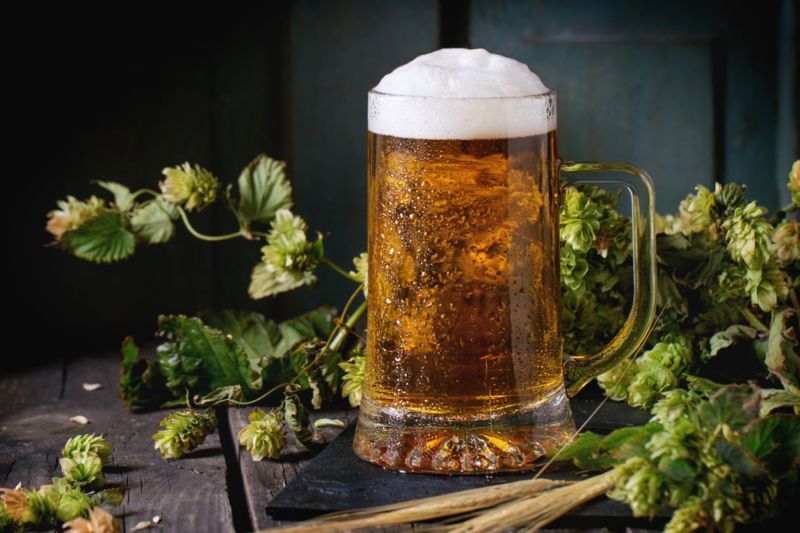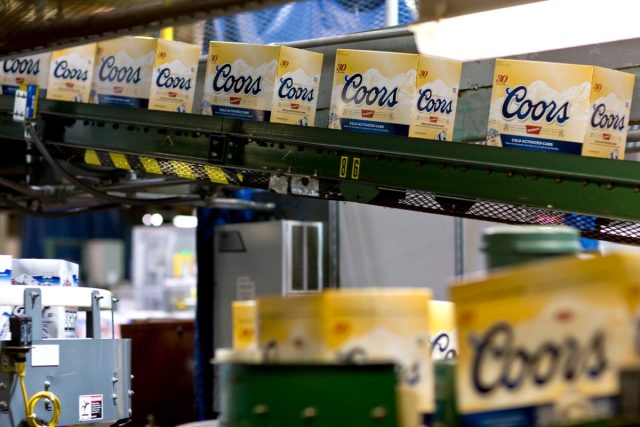
Last month, the Quebec-based Le Castor brewing company recalled three different brands of its beer after numerous incidents of exploding bottles. The beer was re-fermenting in the bottle, and the resulting high pressures proved too much for the bottles to withstand.
This is hardly an isolated case. In 2014, a sour fruit beer called Swill was pulled from North American shelves after several bottles exploded. And a Manhattan barback is suing his former employer after a bottle of Corona exploded while he was placing it in an ice bucket (the incident left him permanently blinded in one eye). That wasn't even the first time a Corona bottle had exploded at the bar. Google "exploding beer bottles" and you'll get hundreds of results.
The culprit is probably the hops, according to Thomas Shellhammer, a food scientist at Oregon State University and co-author of a recent paper in the Journal of Agricultural and Food Chemistry—specifically, Shellhammer points to the growing popularity of a brewing process known as "dry hopping." Far from being the chemically inert ingredient brewers have long assumed, hops contain starch enzymes that, under certain conditions, can boost their activity to such a great extent that excessive re-fermentation occurs ("hop-creep").
"The hops are taking something that's considered by brewers to be unfermentable, and breaking them down to the point where they can actually referment, or become fermentable, or potentially contribute to sweetness, as beer ages," says Shellhammer.
How dry I am
All beer contains hops, a key flavoring agent that also imparts useful antimicrobial properties. (Without them, beer spoils quickly.) Brewers mash and steep grain in hot water, which converts all that starch into sugars. This is traditionally the stage where hops are added to the liquid extract (wort) and boiled to give the beer that hint of bitterness. "During the boiling process, a certain portion of the resins (alpha acids) in hops isomerize into iso-alpha acids," says Shellhammer. "That chemical rearrangement of the molecules is what produces bitterness." Yeast is then added to trigger fermentation, turning the sugars into alcohol.
"American craft brewers in particular are playing with ingredients in ways that traditional brewers have not."
But a little hops goes a long way. Add too many hops, and the beer will be so bitter as to be undrinkable. Dry hopping is a way to put more hops in beer without getting that excessive bitterness. It's added during or after the fermentation stage, after the wort has cooled. In this case, there is no isomerization of the alpha acids, so you get all the aromatic hoppy flavor without too much bitterness. Brewers can use as much as 20 times the usual amount of hops if they're dry-hopping. The tradeoff is that you're also likely to get hop creep.
Dry-hopping is not a new process. More than 100 years ago, British brewers like Horace Brown noticed that dry hopping led to more re-fermentation in casks of ale. The process was largely forgotten for most of the 20th century. Most North American brewers looked to traditional European brewing cultures for inspiration: British ales or Belgian or German beers, according to Shellhammer. It's only in recent years that craft brewers have jumped on the dry-hopping bandwagon. "American craft brewers in particular are playing with ingredients in ways that traditional brewers have not," he says. Dry hopping gives them more freedom to do that.
Fun with fermentation
Shellhammer got involved with this research when representatives from Allagash Brewing Company in Maine contacted him about a phenomenon they were witnessing in a new line of dry-hopped beer. Allagash typically makes Belgian-style, bottle-conditioned beers, meaning there is a certain amount of re-fermentation after packaging to create just the right amount of carbon dioxide. The company monitors CO2 levels and pressure within the packaging very carefully. It noticed that the dry-hopped beers were producing significantly higher CO2 levels and packaging pressures, because there was much more re-fermentation going on than usual. Allagash wanted to partner with Shellhammer to figure out why this was happening.

Shellhammer was game, and he set up an experiment to investigate what was happening during dry-hopping in his laboratory. He used Coors Original Banquet beer, since it was readily available and had low concentrations of fermentable sugars—an important control parameter, since he wanted to determine how much re-fermentation after packaging was due to the enzyme activity of the hops. Next, the researcher added hops and monitored what happened to the CO2 levels and alcohol content. As expected, they increased significantly, but not to the same degree in each case.
Just how active those starch enzymes become depends on factors like the duration and temperature of the process and the presence (or not) of yeast. The late addition of hops to cold wort during the dry-hopping process means those key enzymes aren't deactivated by the high heat of the boiling stage. That makes for extra sugar in the brew, and if there happens to be some lingering yeast present—which is what happened with Allagash's beers—there will be an excess of re-fermentation after packaging. All that extra alcohol and CO2 can translate into exploding bottles.
Shellhammer thinks his findings will help brewers better control the dry hopping process going forward, and he's excited to be part of a new avenue of research. "Beer has been around for millennia, and people have been studying beer for almost that long, so I often wonder how much new stuff we can contribute as brewing scientists," he says. "Are we just walking down the same paths over and over again with different scientific tools or instruments? This feels like a new path."
DOI: Journal of Agricultural and Food Chemistry, 2018. 10.1021/acs.jafc.8b03563 (About DOIs).
reader comments
219